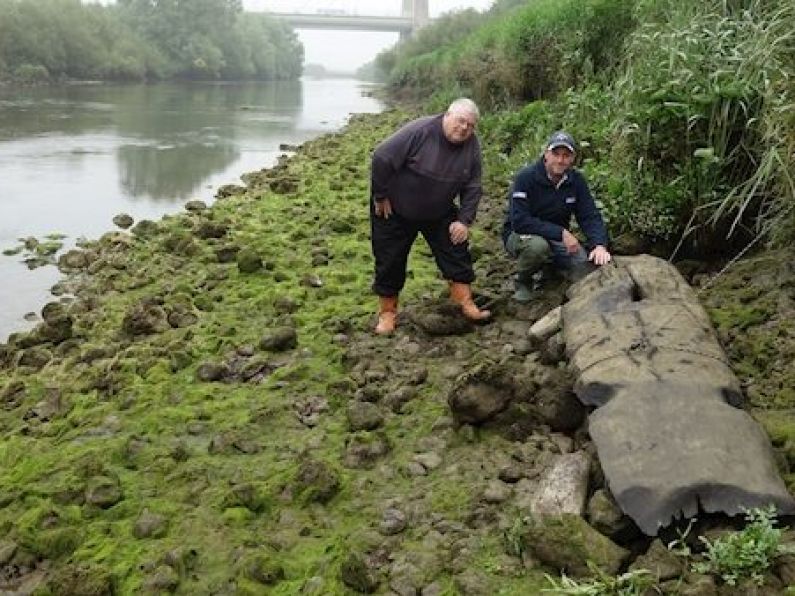Remains found in the River Boyne at Kildare in 2016 are that of a 5,000-year-old longboat, it has been revealed.
Minster for Culture, Heritage and the Gaeltacht, Josepha Madigan, announced the discovery this morning.
Scientific dating confirmed the remains, which were found close to the Brú na Bóinne World Heritage Site, and it dates to the Neolithic period.
The longboat's remains consist of a 3m length of wood which would have formed the base of the boat.
It is estimated that the logboat was originally more than 4m long, shaped out of the trunk of an oak tree using stone axes.
A wood sample was recently radiocarbon dated to between 3,300-2,900BC, which coincides with the period of the construction of the great passage tomb complexes of Knowth, Dowth and Newgrange.
It is the first boat in River Boyne to date to the Neolithic period and is one of 11 discovered in the stretch of water.
The longboat was originally discovered in June 2016 by four local anglers who reported it to the heritage authorities.
Ms Madigan said: "I want to sincerely thank all involved for reporting this discovery so quickly, which has allowed for its care and ongoing conservation and for this exciting new scientific date to be obtained.
"This new knowledge adds to the wonderful archaeological discoveries made this summer across Brú na Bóinne and enhances our understanding of the people within this special landscape, so dominated by the great River Boyne which would have played such a central part in their lives.
The importance of this discovery and the scientific date which has now been obtained for it lies in its contemporaneity with the building of the Great Passage tomb of Newgrange and the other wonderful passage tombs that dominate our World Heritage Site of Brú na Bóinne.
It is tempting to ponder the part such a vessel might have played in the construction of these burial monuments and the lives of those who built them, in ferrying people along the river, and transporting materials and stones used to build the great tombs."






